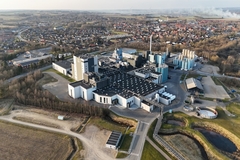
- Industry news
Industry news
- Category news
Category news
- Reports
- Key trends
- Multimedia
- Journal
- Events
- Suppliers
- Home
- Industry news
Industry news
- Category news
Category news
- Reports
- Key trends
- Multimedia
- Events
- Suppliers
New apple research could boost sweetness and drought resilience in crops

Drought is a significant challenge for fruit production, but new research from Northwest A&F University, China, offers hope for improving both drought tolerance and sweetness in apples. The study identifies a genetic mechanism that enhances sugar accumulation and reduces water loss in apples under drought stress.
By regulating four key vacuolar sugar transporter genes, the transcription factor MdDREB2A enhances sugar levels while also strengthening abscisic acid (ABA) signaling, providing a dual solution for increasing fruit sweetness and improving drought resilience.
The research shows that the genes MdERDL6–1, MdERDL6–2, MdTST1, and MdTST2 are significantly upregulated in apple leaves during drought. MdDREB2A directly activates these genes, leading to higher sugar content—glucose, fructose, and sucrose — and reduced water loss.

Overexpressing these genes in transgenic apple and Arabidopsis plants resulted in improved water retention and slower water loss, crucial benefits for surviving under dry conditions.
Additional findings revealed that overexpression of MdERDL6–1 preserved photosynthetic activity and enhanced the plant’s ability to combat reactive oxygen species (ROS) by increasing antioxidant enzyme levels.
These plants also exhibited stronger ABA signaling, with higher expression of ABA biosynthesis genes and response genes. Smaller stomatal openings further helped minimize water loss, making these transgenic plants more drought-resistant.
“This research opens up new possibilities for enhancing both sugar content and drought tolerance in apples,” says Professor Mingjun Li, the study’s corresponding author. “By targeting MdDREB2A and its downstream genes, we can improve water-use efficiency and sweetness in apples. This approach could help growers adapt to changing climate conditions while meeting consumer demand for high-quality fruit.”
The MdDREB2A–VST regulatory pathway provides a valuable tool for developing apple cultivars that thrive in dry conditions and offer sweeter fruit. This approach could also be applied to other crops, providing a promising solution to the challenges of water scarcity in global food production.










